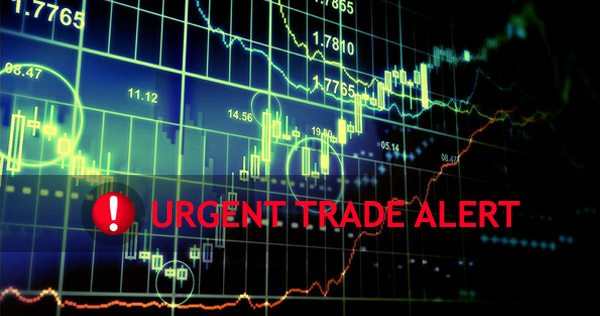As a potentially profitable opportunity presents itself, John will send you an alert with specific trade information as to what should be bought, when to buy it, and at what price. This is your chance to ?look over? John Thomas? shoulder as he gives you unparalleled insight on major world financial trends BEFORE they happen. Read more
As a potentially profitable opportunity presents itself, John will send you an alert with specific trade information as to what should be bought, when to buy it, and at what price. Read more
As a potentially profitable opportunity presents itself, John will send you an alert with specific trade information as to what should be bought, when to buy it, and at what price. This is your chance to ?look over? John Thomas? shoulder as he gives you unparalleled insight on major world financial trends BEFORE they happen. Read more
As a potentially profitable opportunity presents itself, John will send you an alert with specific trade information as to what should be bought, when to buy it, and at what price. Read more
As a potentially profitable opportunity presents itself, John will send you an alert with specific trade information as to what should be bought, when to buy it, and at what price. This is your chance to ?look over? John Thomas? shoulder as he gives you unparalleled insight on major world financial trends BEFORE they happen. Read more
As a potentially profitable opportunity presents itself, John will send you an alert with specific trade information as to what should be bought, when to buy it, and at what price. Read more
As a potentially profitable opportunity presents itself, John will send you an alert with specific trade information as to what should be bought, when to buy it, and at what price. This is your chance to ?look over? John Thomas? shoulder as he gives you unparalleled insight on major world financial trends BEFORE they happen. Read more
As a potentially profitable opportunity presents itself, John will send you an alert with specific trade information as to what should be bought, when to buy it, and at what price. Read more
As a potentially profitable opportunity presents itself, John will send you an alert with specific trade information as to what should be bought, when to buy it, and at what price. This is your chance to ?look over? John Thomas? shoulder as he gives you unparalleled insight on major world financial trends BEFORE they happen. Read more
As a potentially profitable opportunity presents itself, John will send you an alert with specific trade information as to what should be bought, when to buy it, and at what price. This is your chance to ?look over? John Thomas? shoulder as he gives you unparalleled insight on major world financial trends BEFORE they happen.
Further Update to: Trade Alert -(TLT)
Buy the iShares Barclay 20+ Year Treasury Bond Fund (TLT) May, 2014 $114-$117 in-the-money bear put spread at $2.40 or best
Opening Trade
4-17-2014
expiration date: May 16, 2014
Portfolio weighting: 10%
Number of Contracts = 42 contracts
After holding back for months, I finally shot out a Trade Alert to sell short the Treasury bond market (TLT). The second the high frequency traders got a whiff of my trade, they crunched the market nearly an impressive two points.
Congratulations to the Trade Alert followers who managed to get in quick enough. For those who didn?t, wait for the next one. There are plenty of fish in the sea.
Discretion has certainly been the better part of valor in the fixed income market in 2014. To a man, hedge fund traders expected bond prices to take a dive this year, and for yields to soar. Instead, we got the opposite, and yields have plunged, from 3.05% for the ten-year Treasury to 2.59% this week.
There are many important lessons to learn here. This is not your father?s bond market. The internal dynamics of the fixed income markets have changed so much in the last three decades that it has become unrecognizable to long term practitioners, like myself.
A big factor has been the takeover of the bond market by the 1%, the richest segment of the US, and indeed, the global economy. As wealth concentrates at the top, its character changes.
Let me stop here and tell you that the ultra rich are different from you and I, and not just because they have more money. I have learned this after decades long relationships with the planet?s wealthiest families, including the Rockefeller?s, Rothschild?s, DuPont?s, Morgan?s, and Pritzkers, first as clients of mine at Morgan Stanley, then as investors in my hedge fund.
The wealthier families become, the more conservative the get in their investment choices. Their goal shifts from capital appreciation to asset protection. They lose interest in return on capital and become obsessed with return of capital. This is how the rich stay rich, sometimes for centuries.
What this means for the bond market is that they never sell. When they buy a 30-year Treasury bond, it is with the expectation of keeping it for the full 30 years, until it matures. That way they can avoid capital gains taxes and only have to pay interest on the coupon interest.
Back in the 1980?s, when wealth was more evenly distributed, the top 1% only accounted for 1% of Treasury bond ownership. Today, that figure is closer to 25%. Add this to the 50% of our national debt that is owned by foreign investors, primarily central banks, who also tend to also hold paper for its full life. Central banks don?t pay taxes either.
China and Japan, and the biggest holders, with around $1 trillion each. This means that 75% or more of bonds are owned by investors who won?t sell. What does that mean for the rest of us? Bond prices that never go down.
With bond prices very close to 30-year highs, keeping your bonds have been the right thing to do. I can?t tell you how many investment advisors I know who have distilled their practices down to fixed income instruments only. This involves the entire space, including municipal bonds (MUB), corporates (LQD), junk (JNK), and even emerging market debt (ELD).
This is driven my customer demand, the 1% er?s, not from any great insights or epiphany that they achieved on their own.
Of course, there is a certain amount of driving with your eyes firmly fixed on the rear view mirror going on here. Maybe the rich will finally sell their bonds once prices fall hard, stay down, and then go down some more.
Inflation rearing its ugly head might also do the trick, which is always bad for bond prices as, it reduced the purchasing power of money. That is certainly what they were doing in the early eighties, when the ten-year yield hit 12%.
The bottom line here is that while bonds are overbought and due for a pullback, they are not by any means going to crash. We could be living in the 2.60%-3.50% range for quite some time, maybe for years. That is if the new Federal Reserve governor and my friend, ultra dove, Janet Yellen, has anything to say about it. She has only just started and could be with us for another eight years.
Personally, I don?t foresee any appreciable rise in interest rates until we get well into the 2020?s, when real inflation finally returns from the dead.
The best execution can be had by placing your bid for the entire spread in the middle market and waiting for the market to come to you. The difference between the bid and the offer on these deep in-the-money spread trades can be enormous. Don?t execute the legs individually or you will end up losing much of your profit.
Keep in mind that these are ballpark prices only. Spread pricing can be very volatile on expiration months farther out.
Here are the specific trades you need to execute this position:
Buy 42 May, 2014 (TLT) $117 puts at?????$6.30
Sell short 42 May, 2014 (TLT) $114 puts at..??.$3.90
Net Cost:??????????????????.....$2.40
Profit at expiration: $3.00 - $2.40 = $0.60
(42 X 100 X $0.60) = $2,520 or 2.52% profit for the notional $100,000 portfolio.
Legal Disclaimer
There is a very high degree of risk involved in trading. Past results are not indicative of future returns. MadHedgeFundTrader.com and all individuals affiliated with this site assume no responsibilities for your trading and investment results. The indicators, strategies, columns, articles and all other features are for educational purposes only and should not be construed as investment advice. Information for futures trading observations are obtained from sources believed to be reliable, but we do not warrant its completeness or accuracy, or warrant any results from the use of the information. Your use of the trading observations is entirely at your own risk and it is your sole responsibility to evaluate the accuracy, completeness and usefulness of the information. You must assess the risk of any trade with your broker and make your own independent decisions regarding any securities mentioned herein. Affiliates of MadHedgeFundTrader.com may have a position or effect transactions in the securities described herein (or options thereon) and/or otherwise employ trading strategies that may be consistent or inconsistent with the provided strategies.





